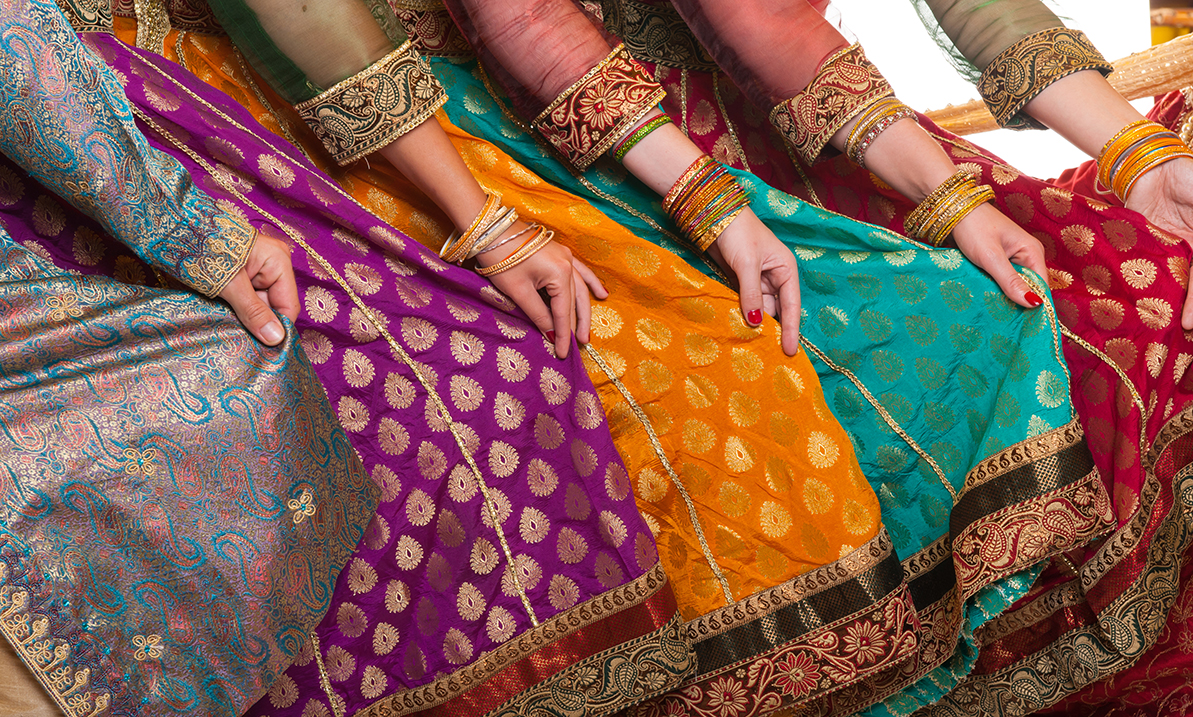The tragedy of cultural appropriation – A battle of policy goals

In the era of globalization and social media, multinational corporations frequently violate the cultural rights of minorities, copying their artistic creations and presenting them as their own.Celebrities ranging from Kim Kardashian to Beyonce, have faced extensive scrutiny for allegedly stealing from other cultures. Gucci, Dior, Valentino, Carolina Herrera, Dolce & Gabbana and countless other top fashion labels have caused a stir over claims of appropriation. But what is this phenomenon of cultural appropriation, why is it problematic, why should you care and what can we do about it? And most importantly: What role could intellectual property law play in it all?
What is cultural appropriation?
A core problem in the discourse relating to cultural appropriation is that it has not been universally defined by law. Appropriation is challenging to identify, and therefore, difficult to remedy. In academia, cultural appropriation has been characterized as the ‘taking from a culture that is not one’s own of intellectual property, cultural expressions or artifacts, history and ways of knowledge’. Typically, this taking takes place in the relationship between a specific subordinate, from whom cultural property is taken, and another, more dominant culture, the appropriator.The attempted definition of cultural appropriation has been held well grounded, however, currently it lacks the strength of law, leaving those looking for protection against the practice in a gray area of the law.
In public discourse attitudes towards the cultural violations of intellectual or physical minority property have frequently been somewhat arrogant. The problem has been held small in comparison to other more urgent ones, and the risks related to the abuse have been downplayed. However, in order to sufficiently understand the depth of the violation, a more thorough glance at the worth of culture is required.
Why is cultural appropriation problematic?
Culture remains for many Indigenous peoples the very material of their sovereignty. Although legally speaking, sovereignty belongs to states that have a permanent population, a defined territory a government and the capacity to enter into relations with other sovereign states, for minority communities, to some extent autonomous from the states to which they belong, an important aspect of sovereignty is their moral independence and ability to define their own values, rules and practices. Historically, the unique cultural characteristics of these cultures have justified the recognition of Indigenous groups as independent and sovereign communities. Because of these defining traits, they are “them”, and not part of a majority culture. The ability to perform unique artistic, religious or social practices is what makes these Indigneous communities culturally distinct.
Why should you care?
Cultural appropriation is an issue much bigger than just copying a design or an artistic expression: cultural appropriation is about making profit from another culture’s creations – technically, of taking what is not one’s own and making a profit out of it – stealing, as we call it. At present, the consequences of these acts are taken too lightly not only by legislators, but also by a wide range of the general public. To sufficiently and personally understand the seriousness of the issue, the following pattern of thought may be helpful.
 A sense of sovereignty and national cultural identity are some of the most historically strong and universal feelings existing in humanity, protected widely and extensively through a significant number of international conventions, principles and regulations. The Treaty of the European Union calls the Union to respect the national identities of its Member States, and the UN Convention on Jurisdictional Immunities of States and Their Property specifies States shall enjoy immunity in respect of themselves and their property. A right to self-determination, as individuals and communities, lie at the heart of many of the most fundamental rights defined by law.
A sense of sovereignty and national cultural identity are some of the most historically strong and universal feelings existing in humanity, protected widely and extensively through a significant number of international conventions, principles and regulations. The Treaty of the European Union calls the Union to respect the national identities of its Member States, and the UN Convention on Jurisdictional Immunities of States and Their Property specifies States shall enjoy immunity in respect of themselves and their property. A right to self-determination, as individuals and communities, lie at the heart of many of the most fundamental rights defined by law.
At war, what humans fight and even die for is not only a physical border, but in addition, for their right to this self-determination, both in terms of physical and intellectual property. As seen in modern day Ukraine, targeted by the ill willed attack of the Russian army, what people fight for with their lives even after all physical property has been destroyed, is in particular the intellectual side of nationality; a right to language, music, art – in short, a right to culture. People are ready to die to ensure their children and all generations afterwards will have the chance to live and grow in peace, and to enjoy the same cultural heritage as their parents, grandparents and ancestors decades and centuries before.
This is the key to understanding the profound consequences acts of cultural appropriation can have on subject communities. After systematically, for generations, dispossessing Indigenous communities of their lands, natural resources and family relationships, targeting these communities by an to some extent corresponding “occupation” of culture as that Russia is now inflicting on Ukraine, Western corporations and individuals are today encroaching on the final and perhaps most important expression of sovereignty these communities have left, namely their culture. Inadvertently, through cultural appropriation, these communities are stripped of their ability and right to independently ascribe meaning to their cultural property, forcedly limited in their ability to identify themselves and decide how to perpetuate their own culture. Minorities are deprived of their right to cultural self-determination.
Thus, although an infringement of a cultural right may not seem that harmful or dramatic – after all, the minorities are not exactly prevented from exercising their cultural expression – on a second thought, one must realize, the infringement has in fact much more profound consequences on a community than what it seems at first glance.
A matter of principles – the purpose of copyright
Despite the obvious outrage and backlash cases of cultural appropriation have stirred, high-profile brands and public figures continue to cause harm to Indigenous cultures without the law or public opinion stopping them. In certain contexts, it has been argued no proper, applicable regulatory framework exists to protect against appropriation. However, this interpretation can be debated. Although, indeed, cultural appropriation currently hovers in a gray zone where the line between permissible inspiration and harmful appropriation is blurred, in terms of its policy goals, the protection against appropriation does in fact fit overwhelmingly well under the legislative sphere of intellectual property law.
Although several arguments can be made in favor of extending the copyright framework to cover cultural ethnic minority expressions, the most profound one links to the principles and ideologies underlying intellectual property and copyright law.
At the heart of copyright law, and overall the entire intellectual property system, is a wish to reward and encourage the creative work of human beings, and to inspire innovative activity and enable the making of a living through creative employment. The mission of copyright protection is two-fold. On one hand, the traditional protectionist objective of copyright law is fairly simple; through an exclusive right to use and guard over the artistic or scientific product of his or her creation, the copyright holder is able to benefit from his creation economically and make up for the investment he has made in its creation. In case third parties take advantage of the created work against the author’s will or abuse the work in a way that offends the author, the author can claim damages and compensation with the support of the copyright system.
On the other hand, copyright regulation also aims for the common good. Copyright limitations do not aim at paralyzing creativity and cultural expression through excessive restrictions, but instead aims to enable the utilization of products of creative work widely in society, enriching cultures and societal activity. By encouraging authors to create and the public to benefit and get inspired by enjoying the products created through copyright protected work, the state makes sure humanity develops both in terms of arts and science – and therefore, overall as a society.
A discourse deeply entrenched in the thematics of intellectual property law regards the dichotomy and balance between these goals: between the extent to which protection should be reached, and to which freedom to use should be secured. This partial contradiction and balancing act, aiming to both limit and enable the public to make use of the creations of individual (or collective) authors, has been used extensively in the discourse against copyright protection for ethnic minority expression.
However, in connection to cultural heritage and minority expressions of art we can see how beautifully these goals can at their best align – together, without conflict. Extending copyright protection to ethnic minority culture is natural; after all, why should we deny the artists of these expressions from enjoying their right to economically derive benefit from their product, and to protect their work from unauthorized use?
Allowing minorities to claim compensation for the use of their cultural products could enable minority communities to make a profit from their creative inheritance and build their communities in a constructive way. Given that Western countries have fought to support ethnic minorities to continue existing side by side with the increasingly capitalized society, it seems ludicrous this way of financing community growth by benefiting from the most important intellectual property these communities have would be prevented. Such an approach is illogical.
Simultaneously, finding ways in which Western actors, whether corporate or individual, can enjoy the artistic expressions of ethnic minorities in a legal and just way should be in all of our interests. The blurriness of the current regulation leads to nothing but unfortunate outcomes. Corporate actors are canceled on social media if unjustly using the intellectual property of ethnic minorities; individuals do not dare to use certain costumes and clothes due to their fear of appropriating by accident; and jury’s are confused by the way in which they are forced to apply copyright laws in a technically illogical and unethical manner, providing copyright and trademark protection to works of art technically created by Western corporations, but in fact basing on traditional works of ethnic art. Clarifying the legal framework is in all ways in the interests of everyone, and the outcomes walk hand in hand with the deepest principles of copyright law.
Concluding remark
In political discourse the control of cultural appropriation is too often depicted as a mission impossible. Despite fears of a too extensive reach of copyright and of the line between permissible and unpermitted becoming blurry, the differentiating between permissible exchange of cultural ideas and cultural appropriation is not quite as difficultly drawn as perhaps argued by principled opposers of extended copyright protection.
The legislative limits of intellectual property protection to cultural appropriation are further discussed in the second part of this article.
Writer is a former trainee of IPR University Center.
Kirjoittajat





